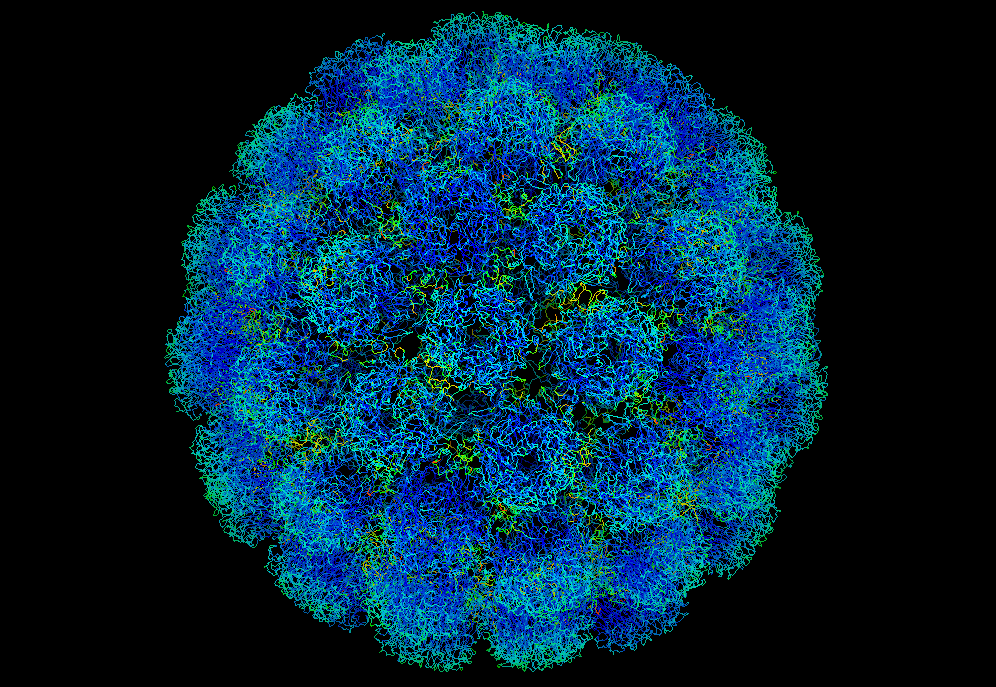~~~~~~~~~~~~~~~~~~~~~~~~~~~~~~~~~~~~~~
There are countless examples of life-enabling collaboration between bacteria and their animal or plant hosts. We humans, for example, benefit from bacteria living in our guts to help us digest food. And 90% of our cells are bacterial. We look human because our cells are bigger, that's all. Here is another surprising example of important collaboration between bacteria and other living things:

How Bacteria Help Pitcher Plants Trap Prey
- Pity the insect that tumbles into a pitcher plant’s trap. The slippery walls and waiting pool of water ensure it won’t clamber back out. There’s nothing left to do but wait to be digested.
- The California pitcher plant (Darlingtonia californica) is also called the cobra lily for its curled-over shape that hides its exit from its victims.
- Unlike other pitcher plants, it doesn’t fill its trap from above with rainwater but from below, drawing water up with its roots. But like others, it seems to use bacteria living in that well to help digest its prey.
- The bacteria perform another role too: making the liquid even harder for an insect to escape than ordinary water.
Continue reading this and other amazing articles about microbes

Nearly a century ago, scientists first noticed that the water in the traps of some pitcher plant species had unusually low surface tension. This means an insect that’s used to safely tiptoeing across puddles suddenly finds itself drowning inside a pitcher plant. But the reason for this extra-deadly water wasn’t clear.
In 2007, Laurence Gaume and Yoel Forterre of France’s CNRS studied the liquid of the pitcher plant Nepenthes rafflesiana and found that it has so-called viscoelastic properties. This means “the power of gluing insects,” Gaume explains, and of forming watery filaments that cling to a struggling bug.
Inspired by that research, David Armitage, a graduate student at the University of California, Berkeley, wondered whether some of the unusual properties of a pitcher plant’s liquid might come from the bacteria residing there.
He gathered water from six D. californica wells and measured the liquid’s surface tension. It was significantly lower than the surface tension of plain water.
He gathered water from six D. californica wells and measured the liquid’s surface tension. It was significantly lower than the surface tension of plain water.
Then Armitage filtered the bacteria out of these fluids and used them to create artificial pitcher plant traps in the lab.
He started with glass tubes and added sterile water and small amounts of pitcher bacteria, along with ground-up crickets to feed the bacteria.
The resulting fluids had similar surface tension to the natural pitcher plant fluids. After leaving the tubes alone for a month, Armitage dropped ants into them.
He started with glass tubes and added sterile water and small amounts of pitcher bacteria, along with ground-up crickets to feed the bacteria.
The resulting fluids had similar surface tension to the natural pitcher plant fluids. After leaving the tubes alone for a month, Armitage dropped ants into them.
No ants in plain water fell below the surface. Ants in pitcher fluids, or artificial pitcher fluids, mostly sank. But as Armitage made the artificial pitcher fluids using smaller and smaller concentrations of bacteria, the ants became more likely to escape.
Gaume, who didn’t work on Armitage’s study, says this convincingly shows that pitcher plant bacteria help to keep prey from escaping.
She notes that the fluid of D. californica doesn’t have all the sticky properties of the N. rafflesiana fluid she studied, though; different pitcher plant species may use different sets of tricks to hold onto their victims. And, Gaume adds, it’s still possible that the plant itself makes a liquid with low surface tension.
There are about 200 to 500 species of bacteria present in pitcher plant fluid, says Armitage, who’s now at the University of Notre Dame. “A few common species seem to be members of groups known to produce compounds that affect the surface tension of their medium,” he says, but it will take more research to figure out exactly which bacteria make the water so dangerous.
“Alternatively,” Armitage adds, the low surface tension could be simply a side effect of the bacteria digesting bugs in the traps, “as fatty oils from the insect corpses are released into the water column.”
Either way, the partnership between pitcher plants and their resident bacteria seems to run deep. Carnivorous plants don’t necessarily work alone, and the cobra lily relies on microscopic partners for its deadly bite.
Source
http://blogs.discovermagazine.com/inkfish/2016/12/12/bacteria-help-pitcher-plants-trap-prey/#.WULSacpK2M8
RELATED
 A VIRUS HAS MADE HUMAN EXISTENCE AND REPRODUCTION POSSIBLE
A VIRUS HAS MADE HUMAN EXISTENCE AND REPRODUCTION POSSIBLE - PEOPLE AND OTHER MAMMALS WOULD NOT EXIST IF IT WERE NOT FOR A VIRUS that is essential for the placenta, on which mammals depend to reproduce.
READ MORE
http://ottersandsciencenews.blogspot.ca/2016/01/a-virus-has-made-human-existence-and.html
More fascinating stories about microbes and viruses on this blog (almost a hundred of them)
No comments:
Post a Comment
Thank you for visiting my blog. Your comments are always appreciated, but please do not include links.